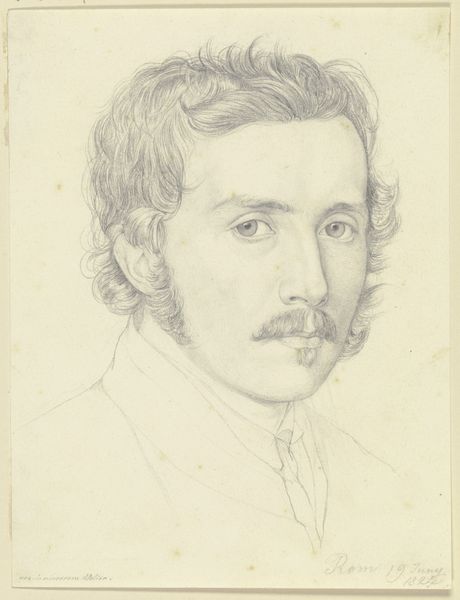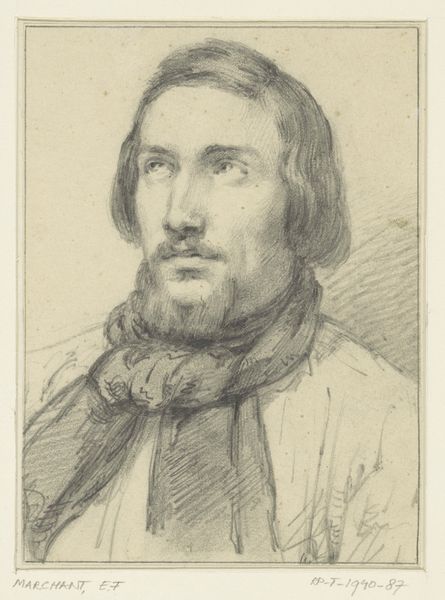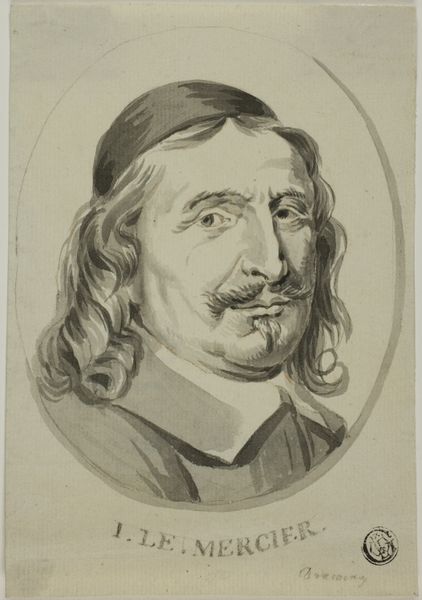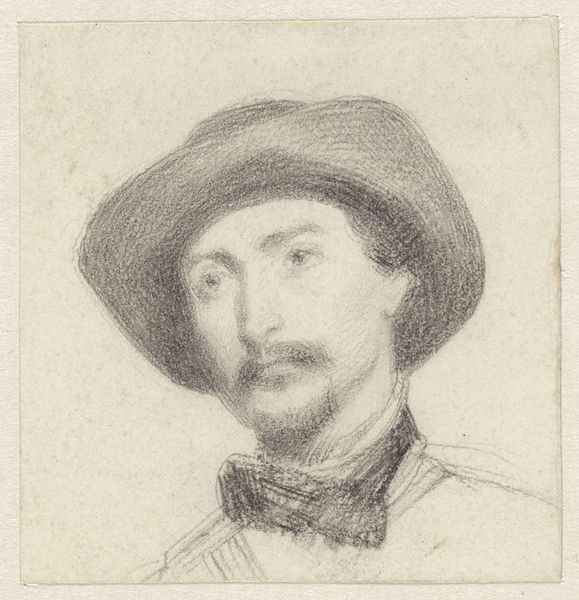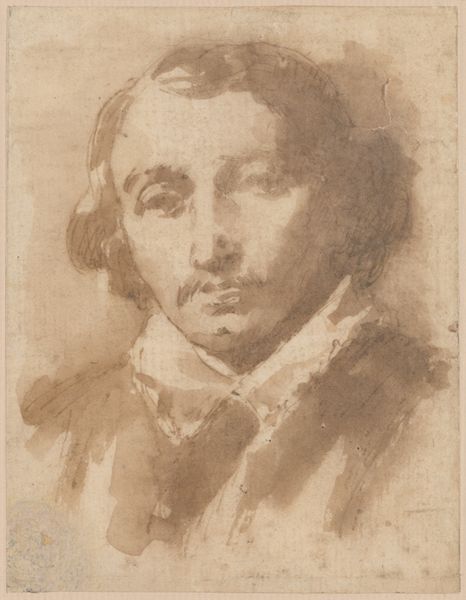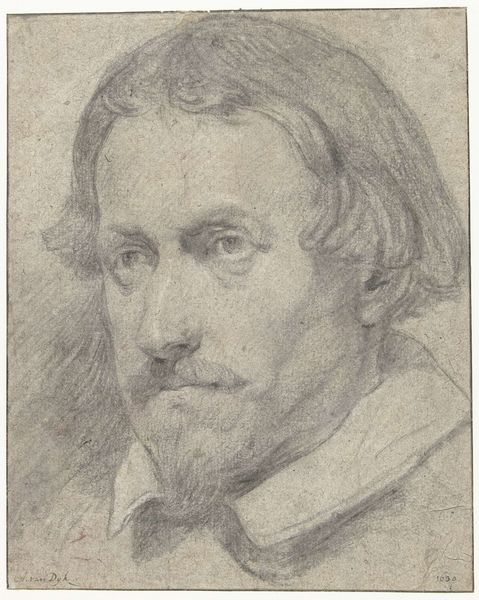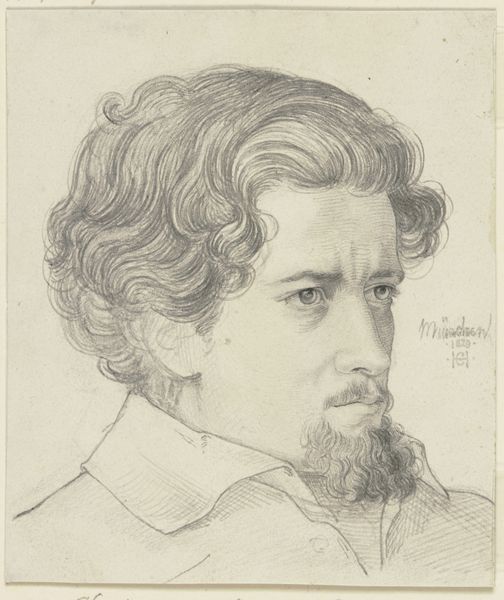
drawing, pencil
#
portrait
#
drawing
#
pencil drawing
#
romanticism
#
pencil
#
history-painting
Copyright: Public Domain
This portrait of the Baltic painter August Pezold was drawn in 1820 by Nikolaus Hoff, using graphite pencil on paper. Graphite, essentially carbon, is a relatively humble material. Yet in Hoff’s skilled hands, it models Pezold’s features with remarkable subtlety. Consider the sheer labor involved in achieving this level of detail. The precise control of line, the delicate rendering of light and shadow, all speak to hours of painstaking work. In an era before photography, such drawings were crucial for disseminating likenesses. They were a form of visual currency. This portrait speaks to the value placed on artistic skill and the social networks within the art world of the time. It bridges the space between craft and fine art, showing how even a simple material, when combined with expertise, can capture the essence of a person and an era. The material and the making are key to understanding its significance.
Comments
No comments
Be the first to comment and join the conversation on the ultimate creative platform.
